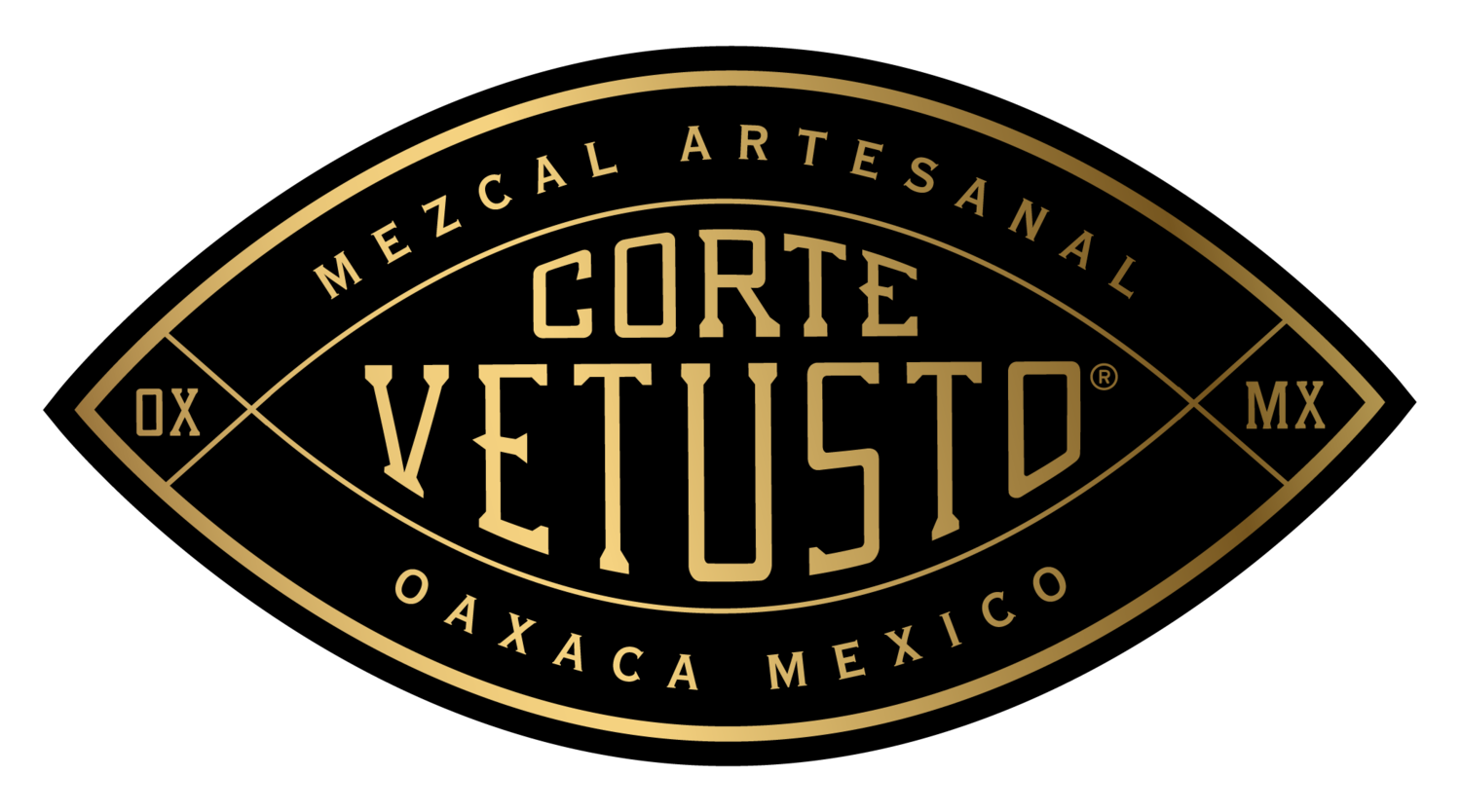The following 5 steps describe the artisanal production of Corte Vetusto mezcal.
Based largely on centuries-old techniques, this is an authentically crafted spirit and a real labour of love. It takes over a month to make our small batches. There are no formulas to follow or scientific equipment to rely on. Instead, it requires patience, a watchful eye and a skilful touch.
harvesting
The agave has a significant influence on a mezcal, which is why select only the finest, most mature, agave. These cost more, but produce mezcals that are richer, more flavoursome and more complex. Armed only with a machete, the pencas (leaves) are cut away with precision, exposing the piña (heart) of the agave. The piña is then removed from the ground using a coa, a long wooden stick with a sharp, flat blade at the end. Depending on the agave species, the piña can weigh anywhere between 25-350kg! This laborious work is done early in the morning to avoid the draining heat. Once at the palenque (small distillery), the piña are weighed and then individually cut by axe into similar sized pieces, to ensure even cooking.
COOKING
Artisanal mezcal uses an horno (conical earthen pit oven) to roast the agave and convert the natural starches into fermentable sugar. Juan Carlos’s horno is lined with volcanic rocks in order to absorb and maintain heat. Regional hard woods, including mesquite, which is chosen for flavour, are placed at the centre of the oven and lit. The wood is then covered by river stones until they are white hot. A ritual is performed to ask the Gods for their blessing on the batch. The stones are then covered with a layer of bagaso (agave fibres) from a previous distillation to prevent the agave from burning and resulting in overly smoked or bitter tasting mezcal. Finally, the agave are covered with tarp and then with soil to seal the oven. Depending on the type and size of the agave, they are cooked for between 3-5 days until perfectly roasted and caramel coloured.
MILLING
Once cooled, the sweet-smelling and tender agave is chopped into small chunks by machete, to prepare it for milling. It’s then slowly crushed by a tahona (large stone milling wheel), pulled around a circular stone base by a horse called Payaso (Clown), due to the distinct markings on his face. The resultant bagaso (agave fibres) and juice are then transferred to large, open-topped wooden vats for fermentation.
FERMENTING
Once the bagaso has been loaded into the fermentation vats, water is added, which will also influence the final flavour of the mezcal. Juan Carlos is blessed with pure spring water, which runs off the mountains behind Mitla. Unlike some Mezcaleros who use cultured yeasts or accelerants to shorten this phase, Juan Carlos allows fermentation to occur naturally, initiated only by the wild airborne yeasts surrounding the palenque. These yeasts are unique to each palenque and another key factor in the taste of the final product. Depending on the season, humidity and the altitude of the palenque, this process can take anywhere from 1 – 2 weeks. The yeasts convert the sugars to alcohol, generating heat and carbon dioxide. A thick, paste-like cap forms on the surface. The process is monitored by checking the temperature and observing the bubbles that break through the paste cap. Once complete, the tepache (mash) is transferred to the still for distillation.
DISTILLING
Unlike Tequila, both the liquid and the fibres are placed in the still for maximum flavour and complexity. It is then twice distilled in small batches in wood-fired copper or clay pot stills. The choice of still influences the speed, output and flavour of the mezcal. Juan Carlos is experienced in both distilling methods and actually combines them for the Tobala and the Ensambles. This unique process marks him out as a true Maestro Mezcalero and a genuine craftsman. Knowing when and where to make the cut is the Maestro Mezcalero’s ultimate skill. By taking mezcal straight off the still, pouring it into a jicara (gourd) from a height and simply observing the size, quantity and dissipation rate of the perlas (bubbles), he is capable of determining the ABV within 1 or 2 degrees. After a period of resting, it is ready to be bottled as joven (unaged) mezcal.







